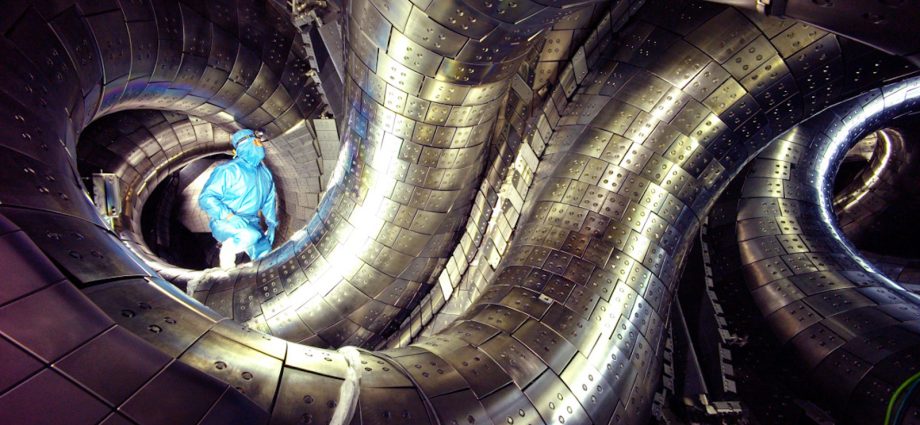TOKYO – Kyoto Fusioneering is raising big new money from domestic venture capital funds, banks and energy, engineering and trading companies, the latest indication that nuclear fusion energy ventures are becoming increasingly investible in Japan.
On May 17, Kyoto Fusioneering announced its 10.5 billion yen (US$75 million) Series C funding round had been oversubscribed, marking a repeat of its Series B fund-raising in February 2022.
The nation’s most prominent nuclear fusion technology developer has now raised 12.2 billion yen ($87 million) since it was spun out of Kyoto University in October 2019.
Kyoto Fusioneering’s management says it plans to use the new capital to hire more engineers, accelerate the development of fusion reactor materials and key components, develop its power plant engineering capability and continue its expansion in the UK and US.
Even before the new capital infusion, the company has already benefitted from the expertise of its corporate investors and the development of new technologies that could give it an early edge in what is expected to become a very large and highly competitive global fusion market.
INPEX, Japan’s largest oil and gas exploration and production company, said it invested in Kyoto Fusioneering because it was “the first initiative deemed to have commercial potential” under the INPEX Challenge Program, an in-house venture capital scheme established in 2021.
Read: “Japan boldly igniting a national fusion revolution“
“Through this investment, INPEX will explore the possibilities of supplying fusion energy by supporting Kyoto Fusioneering’s technological and operational development, while utilizing the knowledge cultivated through its own energy development business.”
In a transition away from fossil fuels, INPEX is conducting R&D in carbon capture, storage and recycling, hydrogen and ammonia, wind and geothermal energy, and now nuclear fusion.
The company’s ownership structure reflects the close nexus between corporate and official Japan. INPEX is 21.2%-owned by Japan’s Ministry of Economy, Trade and Industry (METI) and 4.1%-owned by Japan Petroleum Exploration (JAPEX), which in turn is 34.9%-owned by METI and 5.1% by INPEX.
Helical Fusion, another local start-up that aims to build a commercial helical fusion reactor, has reportedly raised capital from telecom carrier KDDI’s Green Partners Fund, the Nikon-SBI Innovation Fund and SBI Investment, which is also aiming to build a helical fusion reactor.
Funds raised in April this year and November last year will be used by Helical Fusion to fund its ongoing development of a helical fusion reactor, superconducting magnets and other related technologies.
Helical reactors are spiral-shaped and are a type of stellarator that confines plasma using magnetic fields. The technology is regarded as particularly well-suited for commercial reactors due to its stable operation.

Headquartered in Tokyo, Helical Fusion was founded in 2021 with technology developed by Japan’s National Institute for Fusion Science. It has so far received about $6 million in seed funding from Japanese venture capital and corporate investors.
Helical Fusion’s R&D is led by co-CEO Junichi Miyazawa, a nuclear physicist from the Graduate School of Engineering at Nagoya University; Board Member Takaya Goto, a specialist in fusion reactor system design and professor at the National Institute for Fusion Science; and science advisor Akio Sagara, a nuclear engineer and professor emeritus at Japan’s National Institute for Fusion Science.
EX-Fusion, yet another fusion start-up founded in 2021 and headquartered in Osaka, is venturing to commercialize laser-based nuclear fusion. It reports raising 261 million yen ($1.9 million) in 2022 from a Tokyo-based venture capital firm and Osaka University Venture Capital.
The company was founded by Shinsuke Fujioka from Osaka University’s Institute of Laser Engineering; Kazuki Matsuo, a specialist in laser fusion and high energy density plasma from Osaka University’s Graduate School of Science; and Yoshitaka Mori, associate professor at the Graduate School for the Creation of New Photonics Industries (GSCNPI) in the Japanese city of Hamamatsu.
Via GSCNPI, EX-Fusion has introduced laser technology from Hamamatsu Photonics, a locally-based company that currently makes the world’s most powerful semiconductor lasers. Hamamatsu Photonics is working to develop a pulsed laser with the energy and repetition rate required for nuclear fusion.
In April, METI Minister Yasutoshi Nishimura visited GSCNPI, EX-Fusion’s R&D facility housed there and Hamamatsu Photonics, which was the driving force behind the school’s creation.
EX-Fusion has also joined the Institute of Laser Engineering, the University of Adelaide, Australian laser fusion company HB11 and other companies in a high-intensity laser project in Australia.

Underscoring the increasing investability of Japanese nuclear fusion ventures, Kyoto Fusioneering’s Series C funding attracted a wide and deep range of Japanese investors, including:
- JIC Venture Growth Investments Co, Ltd
- Coral Capital
- DBJ Capital Co, Ltd (Development Bank of Japan)
- Electric Power Development Co, Ltd(J-POWER)
- INPEX Corporation
- JAFCO Group Co, Ltd
- Japan Co-Invest IV Limited Partnership
- Sumitomo Mitsui Trust Investment Co Ltd
- JGC MIRAI Innovation Fund / General Partner Global Brain Corporation
- K4 Ventures GK(Kansai Electric Power Group)
- Mitsubishi Corporation
- Mitsubishi UFJ Capital Co, Ltd
- Mitsui & Co, Ltd.
- MOL PLUS Co Ltd
- MUFG Bank, Ltd
- SMBC Venture Capital
Among them, JGC is Japan’s top plant engineering, procurement and construction company. Mitsubishi Corporation is its largest general trading company. MOL PLUS is the corporate venture capital fund of shipping company Mitsui OSK Lines.
For more detail on the origin, technology and business activities of Kyoto Fusioneering, see my February 2022 article in Asia Times.
Follow this writer on Twitter: @ScottFo83517667

